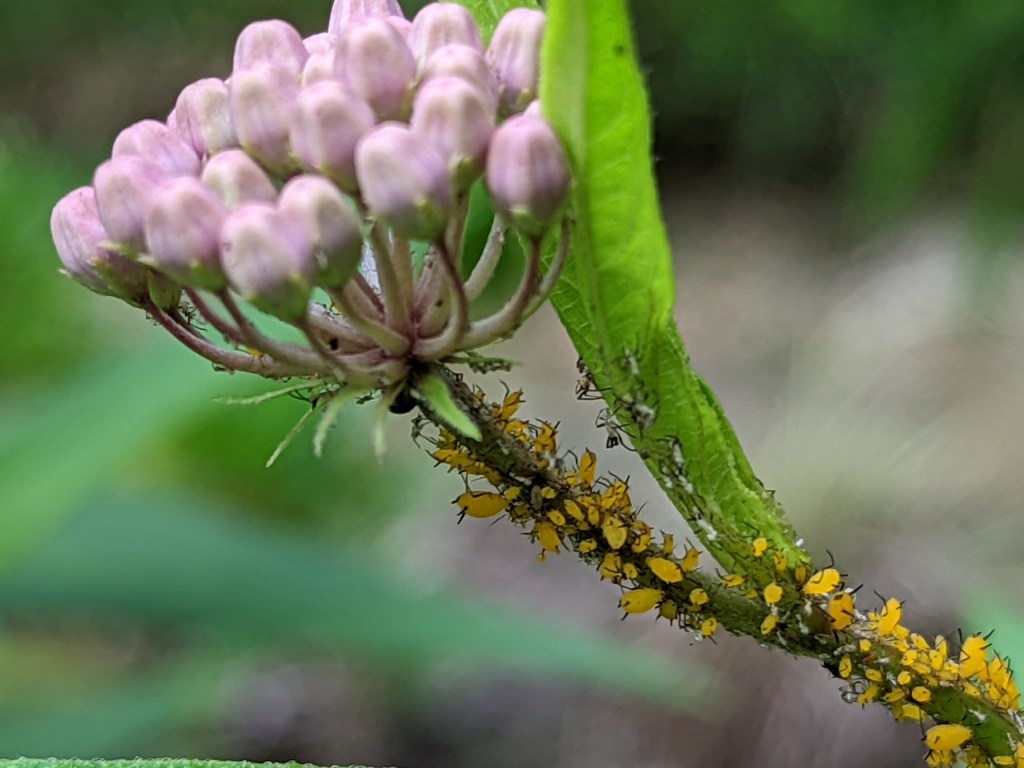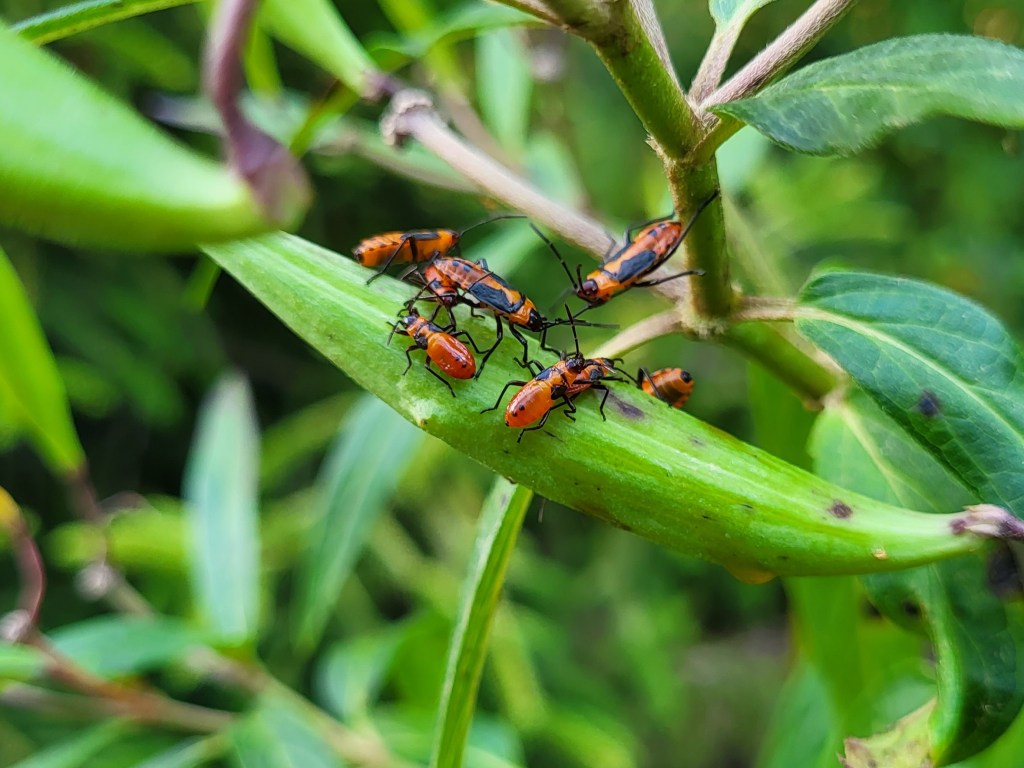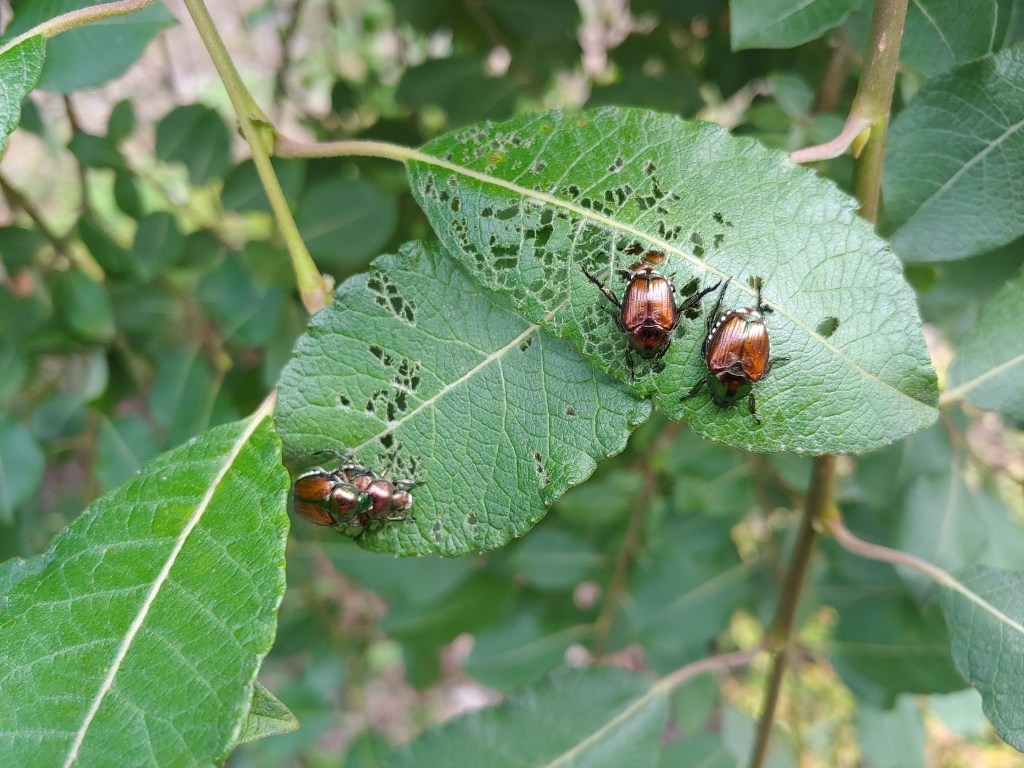The garden’s milkweeds (Asclepias incarnata, below) are annually infested by aphids as the flowers near their peak. Within days, assassin bugs arrive, and while the aphids are not eliminated, their numbers are greatly reduced. The milkweeds suffer slight damage but return the next spring without fail.


This year, the aphids are no-shows. It appears that the assassin bugs miss them, and so do I, or rather I miss the observation of natural processes at work. I have no reason to enjoy watching as assassins consume the smaller aphids, but this is one of the fundamental functions of attracting wildlife to the garden.

I suspect similar processes maintain Japanese beetles (above) at minimal levels. The garden’s abundant birds must be the reason why tent caterpillars that were once regular visitors are rarely seen. I cannot confirm the reasons behind the absence of any insects, but it has been decades since insecticides were sprayed in this garden, yet there is little evidence of more than scattered insect damage.

If anything, I suspect there could be a surplus of birds in this garden where shelter and water sources are abundant, but perhaps living food sources (caterpillars) could be dwindling. Happily, I notice good numbers of skippers and swallowtail butterflies this summer, but this number varies from year to year.
